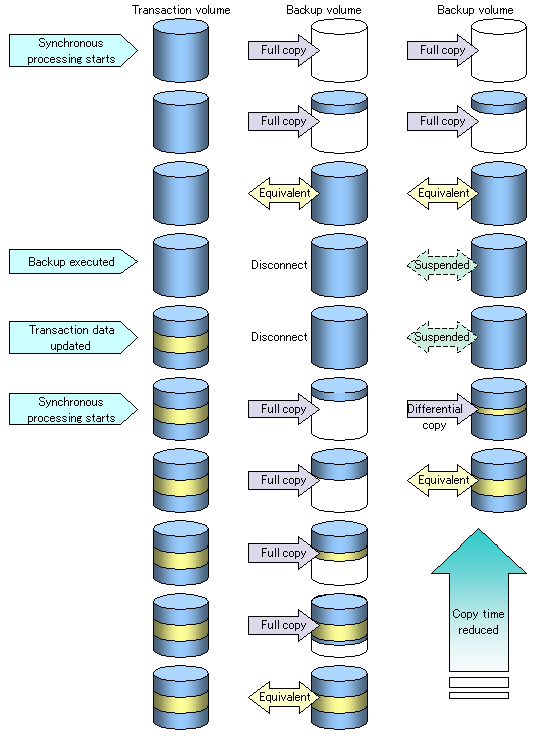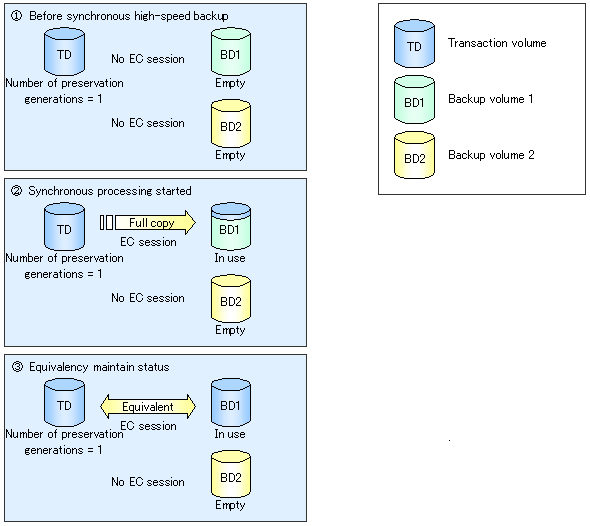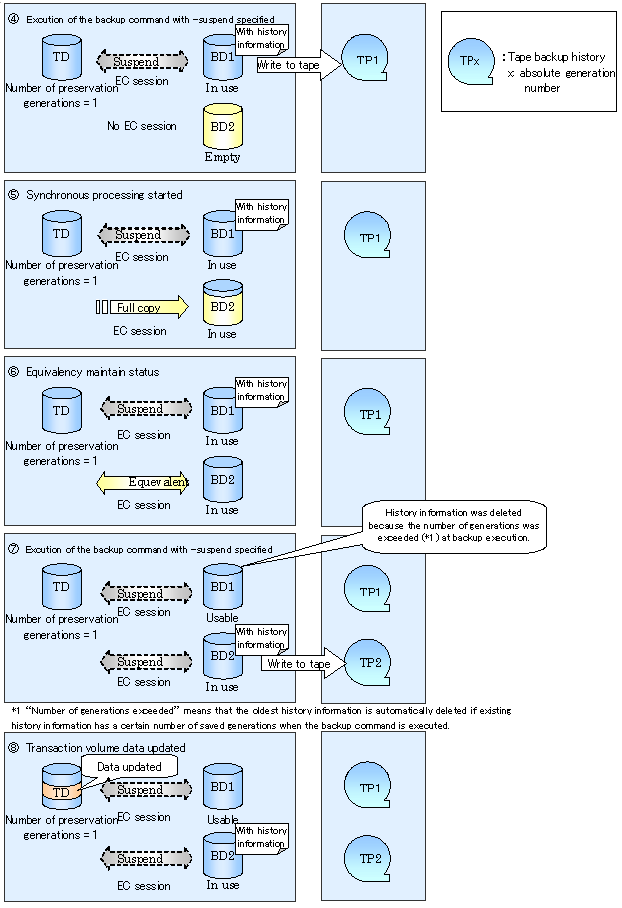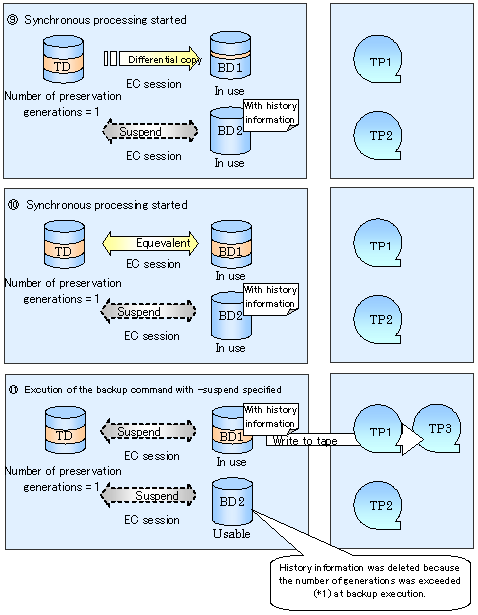The Suspend/Resume function sets Suspend/Resume for the equivalency maintenance status using EC. Using this function for differential copying from the Suspend state enables higher-speed synchronous backup.
AdvancedCopy Manager provides two backup functions: snapshot high-speed backup and synchronous high-speed backup. In snapshot high-speed backup, OPC is used to create a backup; in the synchronous high-speed backup, EC is used to create a backup. The Suspend/Resume function can be thought of as a kind of synchronous high-speed backup that uses EC.
In ordinary synchronous high-speed backup, the synchronous processing start command starts copying using the EC function, then sets the equivalency maintenance status after the copying is completed. The backup execution start command is then executed. This cancels EC and creates a backup. Copy to tape is implemented from the backup volume, the same as in ordinary synchronous high-speed backup.
In synchronous high-speed backup using the Suspend/Resume function, when the backup execution start command with -suspend specified is executed, EC is suspended, the backup process is completed, and the EC status is saved. The next time that the synchronous processing start command is executed, EC resumes and only data that has been updated since the suspend state was last set is copied. As a result, the backup preparation time is shortened.
A comparison between ordinary synchronous high-speed backup and synchronous high-speed backup using the Suspend/Resume function is shown below.
Figure 5.5 Comparison between ordinary synchronous high-speed backup and synchronous high-speed backup using the Suspend/Resume function

Perform synchronous high-speed backup using the Suspend/Resume function as follows:
When the equivalency maintenance status is reached after the start of synchronous processing, execute "11.2.2.1 acmbackup (Backup command)" with the suspend specification to suspend synchronous processing.
When history information is deleted because the number of generations has been exceeded or by the history information deletion command, the backup volume enters the Suspend state without any history information. If new synchronous processing starts at this time, then the suspended backup volume without history information is selected first, and differential copying starts. Only data that has been updated since the Suspend state was last set is copied, therefore the equivalency maintenance status can be reached quickly.
The flow of synchronous high-speed backup operations using the Suspend/Resume function is shown below.
Figure 5.6 Synchronous high-speed backup operation using the Suspend/Resume function


